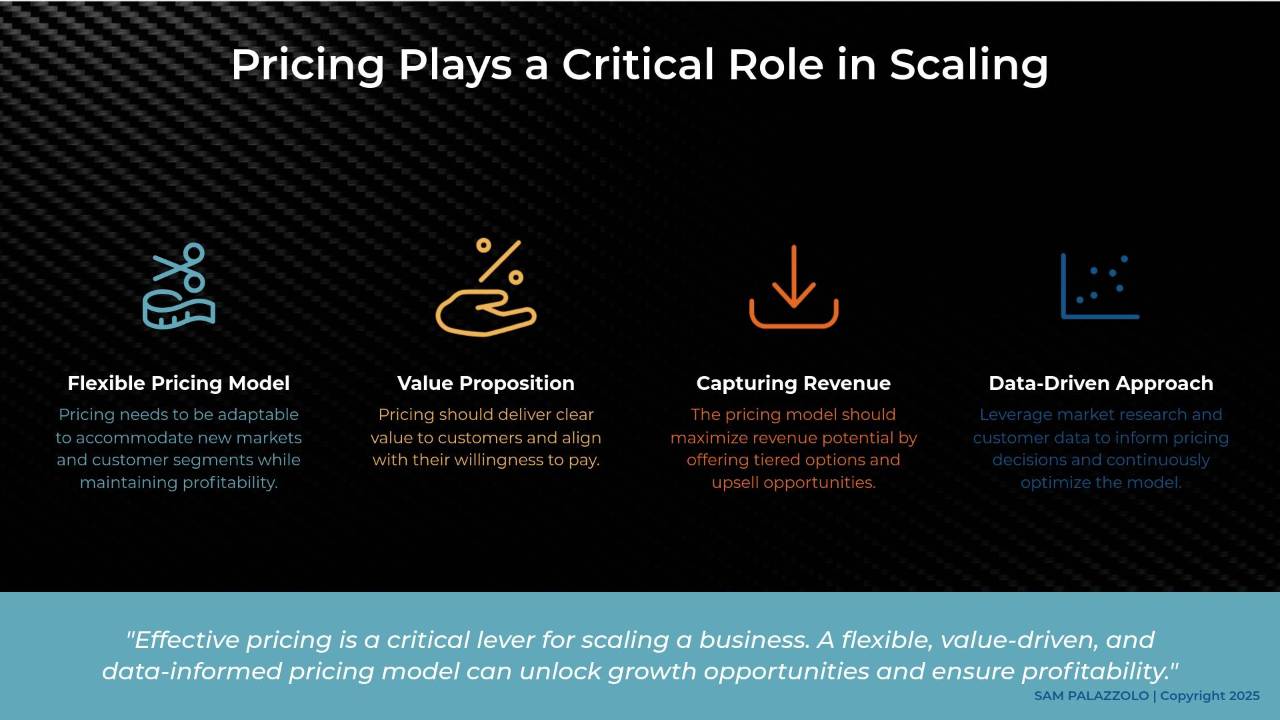How a Strategic Pricing Review Can 2-4X Your Profits
Mar 09, 2025
Pricing Strategy is one of the most overlooked yet powerful growth levers in business. Many organizations focus on increasing sales volume, expanding market share, or improving operational efficiency—but few recognize that pricing strategy alone can have 2-4x the impact on profitability compared to other revenue drivers (McKinsey).
During my time as a Pricing Strategy SME at Deloitte, I saw companies across industries fall into the same patterns. Some underpriced their offerings out of fear of losing customers. Others overcomplicated their pricing structure to the point that customers hesitated or abandoned purchases altogether. In both cases, revenue was left on the table—not because of market conditions, but because pricing was not treated as a strategic function.
If pricing has the power to dramatically impact profitability, why do so many businesses neglect it? The problem is that many view pricing as a one-time decision rather than a continuously optimized process.
This article will explore how companies can refine their pricing strategy for greater revenue, stronger margins, and sustained competitive advantage.
A Structured Approach to Pricing Strategy Optimization
For most businesses, pricing isn’t broken—it’s just not optimized. If you already have a pricing model in place, the next step is to refine and test it for maximum profitability. Below are four proven pricing strategies that can help companies achieve stronger financial outcomes.
1. Psychological Pricing: Influencing Perception
Psychological pricing taps into customer behavior by subtly shaping how prices are perceived. Small changes—such as ending prices in “.99” (charm pricing) or introducing a mid-tier “decoy” option—can influence purchasing decisions and drive higher conversion rates.
For example, Economist.com once tested offering three subscription options:
- Online-only access for $59
- Print-only access for $125
- Print + digital access for $125
Most customers ignored the print-only option and opted for the bundle. By anchoring the highest-value package against an unnecessary middle option, the company increased high-ticket conversions without changing product costs.
2. Dynamic Pricing: Real-Time Revenue Optimization
Dynamic pricing adjusts in real time based on demand, competitor activity, and customer behavior. It is commonly used by airlines, ride-sharing services, and e-commerce platforms to maximize revenue without relying on flat-rate pricing models.
For instance, Amazon’s pricing algorithm updates millions of product prices daily to reflect inventory levels, purchasing trends, and competitive positioning. By using data-driven pricing strategies, businesses can capitalize on demand fluctuations to increase profitability while maintaining customer acquisition.
3. Value-Based Pricing: Aligning Price with Impact
Many businesses set prices based on cost-plus models—adding a fixed percentage to production costs. However, value-based pricing considers what customers are willing to pay based on the perceived benefits of a product or service.
SaaS companies are particularly effective at this. Instead of pricing software based on development costs, companies like HubSpot, Salesforce, and Slack structure pricing tiers based on customer outcomes—such as increased sales, automation, or time savings. By aligning pricing with business impact, these companies maximize revenue and customer willingness to pay.
4. Subscription & Usage-Based Pricing: Creating Recurring Revenue
The shift from one-time transactions to recurring revenue models has reshaped industries. Businesses that once relied on product sales now leverage subscriptions and usage-based pricing to drive customer retention and lifetime value.
A prime example is Adobe’s transition from selling Creative Suite licenses to offering Creative Cloud as a subscription service. This shift resulted in record revenue growth and significantly higher customer retention, proving that customers prefer manageable, ongoing payments over large upfront costs.
The Foundation: Good-Better-Best (G-B-B) Pricing
While advanced pricing strategies can drive incremental improvements, Good-Better-Best (G-B-B) Pricing is the simplest, most effective starting point. This model provides structured pricing tiers that align with different customer segments.
Here’s how it works:
- Good: The essential, no-frills version of a product or service.
- Better: A mid-tier offering with enhanced features and value.
- Best: A premium package with the highest level of service and customization.
The success of G-B-B pricing lies in its ability to anchor customer perception. When presented with three options, most customers gravitate toward the middle tier, boosting average revenue per customer. A SaaS firm we worked with increased conversions by 37% and average revenue per customer by 52% simply by introducing structured tiers rather than a single price point.
A Pricing Strategy Review Cadence: When to Adjust Your Approach
Pricing strategy should be treated as a continuous process, not a one-time decision. To maintain competitiveness, companies should adopt the following review structure:
- Quarterly Check-Ins: Monitor key metrics—conversion rates, customer churn, and profitability margins.
- Biannual Adjustments: Run A/B tests on pricing, discount structures, and tier positioning.
- Annual Overhaul: Assess whether your pricing still aligns with market conditions, customer expectations, and revenue goals.
For instance, if a 5% price increase doesn’t significantly impact conversion rates but raises profitability by 20%, that alone could create substantial margin expansion. Testing and iterating on pricing structure is an ongoing opportunity to refine revenue strategy.
Real Strategies. Real Results.
Most organizations recognize the importance of pricing, yet few treat it as an active growth driver. Those that do—companies that optimize pricing models based on customer psychology, value perception, and structured review cycles—outperform their competitors in revenue growth and profitability.
Whether you are introducing G-B-B pricing for the first time or refining an existing model, the key is continuous optimization.
Sam Palazzolo, Principal Officer @ The Javelin Institute
PS – If you want a deeper look at refining your pricing strategy, let’s connect. Email me at [email protected].
SUBSCRIBE FOR WEEKLY BUSINESS SCALING STRATEGIES
REAL STRATEGIES. REAL SOLUTIONS.
We respect your privacy. Unsubscribe at any time.
